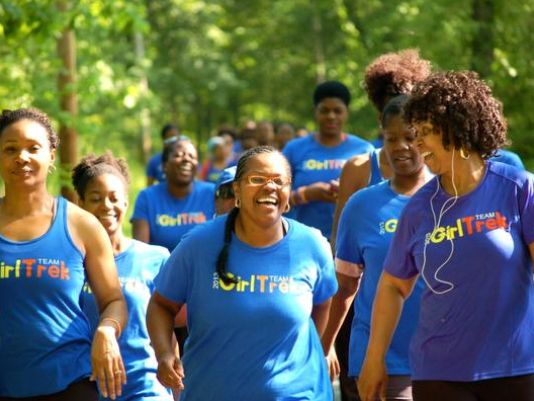Petra Anderson, 47, does not use her company’s fitness center. She doesn’t exercise at home either. But almost every day at lunchtime, the import planner stands up from her desk and, with at least two co-workers, takes a brisk 20 to 40 minute walk outside the headquarters of Molex, Inc. in Lisle, Ill.
The group, which sometimes grows to as many as 10 people, has been walking together for eight years, Anderson says.
“You feel bad if you don’t go,” she says. With a laugh, she adds: “We kind of shame each other into it.”
When it comes to exercise, a little friendly peer pressure can be a good thing. That’s one reason that health experts promote the idea of walking groups — and one reason the American Heart Association will hold its 8th annual National Walking Day on Wednesday.
On that day, the association encourages whole workplaces, schools and community organizations to lace up their sneakers en masse and take a 30 minute walk. Anderson’s company will participate. Chief financial officer Dave Johnson says he hopes most of the 1,000-plus employees at the headquarters will take up the challenge, and that at least a few will get newly hooked.
“We are increasingly looking at ways to get people more active,” he says, and walking groups could be just the thing for people who don’t care for the fitness center, the company’s running club or other outlets.
“We promote walking because it’s so easy to do,” says Deborah Rohm Young, director of behavioral research at Kaiser Permanente Southern California, and an American Heart Association volunteer. “You don’t have to change your clothes, you probably won’t get sweaty… And it’s safe.”
Walking is an ideal way for inactive people to literally take the first steps towards fitness, she says. And walking in groups may help people to keep taking those steps, she says.
People who join walking groups can reap substantial health benefits, a growing body of research suggests.
A recent analysis of 42 studies found increases in fitness and reductions in blood pressure, cholesterol, heart rate, body fat and body mass index among people who participated in outdoor walking groups. The analysis, published in The British Journal of Sports Medicine, also found significant decreases in depression.
The findings were especially striking because most of the participants had chronic health problems. Those problems included arthritis, dementia, diabetes, fibromyalgia, obesity, Parkinson’s disease and depression.
“We found multiple health benefits,” and there probably are multiple explanations for them, says study co-author Sarah Hanson, a post-graduate researcher at the University of East Anglia in the United Kingdom.
“I think both the physical activity and also being with others is important,” she says. “In a group, people tend to walk further and faster than if they walked alone.” Importantly, she says, group walkers also talk to one another, providing support and encouragement.
Getting outdoors also may help, she says. Her study did not look at indoor walking groups, such as those popular in many shopping malls.
The study also did not establish how much walking was needed to get health benefits, though it noted that most of the groups walked for fewer than the 150 minutes a week recommended by health authorities in the United States and the United Kingdom.
Walking with a group even once a week can inspire people to be more active on their own, says T. Morgan Dixon, co-founder of GirlTrek, a nationwide organization that encourages African American women to form walking groups.
Each Saturday, hundreds of GirlTrek teams, with more than 25,000 members, put on matching blue T-shirts, lace up their sneakers and walk together, “often starting from their church parking lots,” Dixon says.
But the women challenge one another to do more – to walk at least 30 minutes five days a week. And the ultimate goals are even loftier, Dixon says.
“It’s not to fit into our skinny jeans,” she says. “It is to live longer and live better, leading our healthiest, most productive lives.”
Want to join or start or walking group?
Tips from the American Heart Association:
• Go to Meetup.com to look for a local group or start one.
• Consider walking with people who share your goals or interests – for example, other parents or dog-walkers, people with a shared health issue, co-workers or neighbors.
• Set a regular time at least once or twice a week. Consider tying the time to another regular event – such as a farmers’ market or children’s story time at the library.
• Select a route. Consider safety, access to water and bathrooms and traffic during your preferred walking time. A scenic route is ideal, but try to keep it close to your homes or workplaces to maximize regular attendance.
Source: USA Today
March 29, 2015
By Kim Painter, photo by T. Morgan Dixon, GirlTrek
http://www.usatoday.com/story/news/nation/2015/03/29/walking-group-health/25219949/











